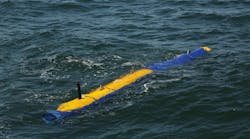By Courtney E. Howard
BOSTON - One of the most crucial roles of the U.S. government is to share important military technologies with U.S. allies, and to keep these technologies out of the hands of the nation’s adversaries, says a top U.S. import/export official.
“Our goal is getting things they need to those in need quickly, and keeping them from those who would do us harm,” says Ann K. Ganzer, director of the Office of Defense Trade Controls Policy (DTCP) at the U.S. Department State.
Ganzer spoke in March at the Military Technologies Conference (MTC; www.miltechconference.com) in Boston, which was sponsored by Military & Aerospace Electronics magazine. Ganzer’s office is connected to the State Department’s Bureau of Political-Military Affairs.
Ganzer discussed her role in resolving export-related policy issues, particularly those related to the foreign development of space systems, rockets, and weaponry. In addition to reviewing the U.S. Munitions List, Ganzer’s office manages government-to-government and direct-sales arms transfers. Among its top priorities are the application and support of Operation Iraqi Freedom and Operation Enduring Freedom.
In short, defense contractors have to go through Ganzer before they can sell their wares overseas. Ganzer says DTCP is at the intersection of licensing and foreign policy. A large part of this is determining whether a product qualifies as commercial off-the-shelf (COTS) or military off-the-shelf (MOTS).
For contractors, subcontractors, systems integrators, and parts manufacturers, making this distinction is no mean feat.
How do you know whether an export is subject to International Traffic in Arms Regulations (ITAR)? Many attendees at Ganzer’s MTC presentation were surprised to learn that not only parts and products are subject to import/export regulations. Technical data provided to a foreign person inside the U.S., as well as defense articles built for foreign customers, are subject to export controls, Ganzer pointed out.
The issue is not always cut and dried. “Just because something is going to be used by the military doesn’t make it a military item,” notes Ganzer. “If you are taking a COTS product and modifying it and using it in a larger military system, then it may require an export license.” If an article starts as a commercial product but a military customer modifies it, the article now is subject to ITAR controls.
Ganzer admits that export licensing cases are increasingly complicated today; as a result, applications are taking longer to process. In the past, the average licensing application was processed in 60 days; now that time is doubled.
Today’s export licensing process investigates the person or organization exporting, quantities being exported, foreign policy and national security concerns, regional stability issues, human rights policy, and obligations under multilateral organizations.
“If your product could go either way, commercial or military, or if you’re not sure of the export licensing jurisdiction, come in and ask us,” Ganzer says.
Last year, the DTCP processed more than 65,000 export licensing applications. To speed the process, applicants should make sure they fill out all paperwork completely, and attach supporting documents.
Ganzer recommends that applicants keep in mind those who are involved in the review process, including the Department of Defense’s best engineers and “policy wonks.” For this reason licensing applications should offer a simple, honest explanation of what the applicant intends to do with the goods to be exported and how the articles will be used.
“Exporting is not a right; it is a privilege and for some it has been lost,” says Ganzer.
Those whose business depends on exporting military technologies should take advantage of the resources available. Contact representatives at the Department of State with questions, and use online reference material to stay updated on the latest export rules, regulations, forms, and figures.
The U.S. Department of State’s Directorate of Defense Trade Controls website (www.pmdtc.org or www.pmdtc.gov) offers comprehensive information about policies and procedures, violations and penalties, registration and licensing forms, information, and guidelines.
Also offered are median application-processing times, ITAR information, the U.S. munitions list, and the Arms Export Control Act (AECA)-the primary authority under which the Office of DTCP operates.
Registered and licensed makers of defense items also are included online, as are Section 655 annual military assistance reports. The 655 report gives the quantity and dollar value of defense articles and services authorized for sale to each foreign country.
Finally, the site imparts specifics about D-Trade, an electronic defense trade licensing system. “People should use D-trade,” acknowledges Ganzer. “It will be required in the future, so get on-board now and be in the pipeline when that happens.”




